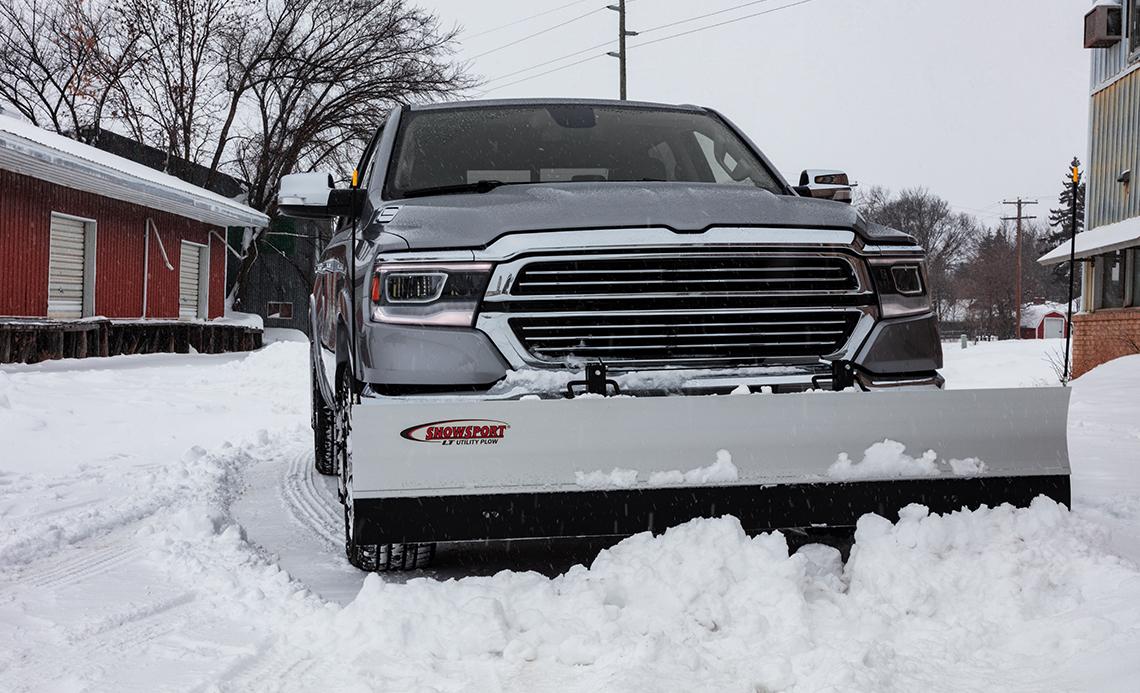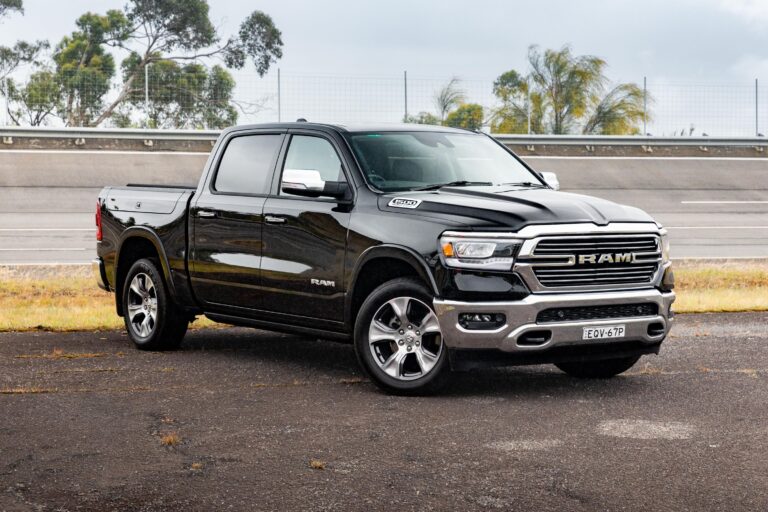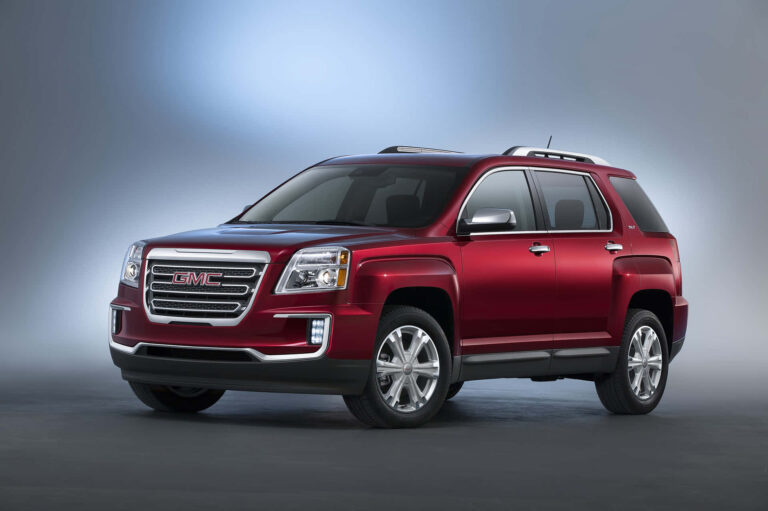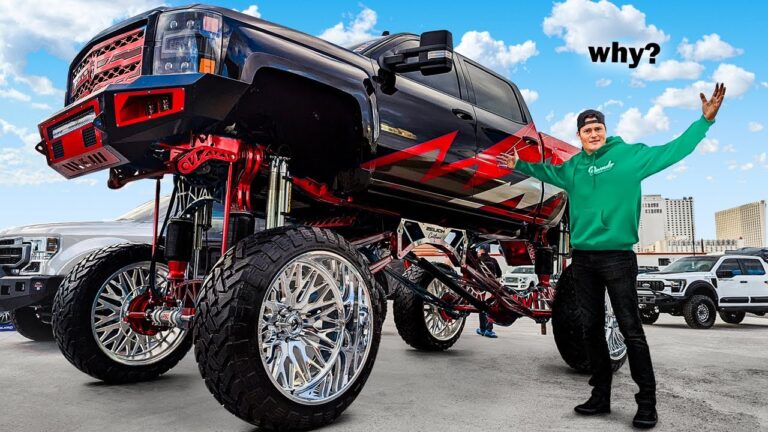Plow Trucks For Sale: Your Comprehensive Guide to Clearing the Winter Path
Plow Trucks For Sale: Your Comprehensive Guide to Clearing the Winter Path cars.truckstrend.com
Winter, for all its serene beauty, often brings with it the daunting challenge of heavy snowfall. For homeowners, businesses, and municipalities alike, ensuring clear and safe pathways becomes paramount. This is where the mighty plow truck enters the scene – a specialized vehicle designed to conquer snowdrifts and restore accessibility. More than just a truck with an attachment, a plow truck is a vital asset, offering solutions for safety, convenience, and lucrative commercial opportunities.
Navigating the market for "Plow Trucks For Sale" can be complex, with a multitude of options ranging from light-duty pickups for residential driveways to heavy-duty commercial beasts designed for expansive parking lots and municipal roads. This comprehensive guide aims to demystify the process, providing you with the knowledge, insights, and practical advice needed to make an informed purchase that perfectly aligns with your specific needs.
Plow Trucks For Sale: Your Comprehensive Guide to Clearing the Winter Path
Understanding the Anatomy of a Plow Truck
Before diving into the market, it’s crucial to understand what constitutes a plow truck and its key components. A plow truck is essentially a robust vehicle, typically a pickup truck or a larger commercial chassis, engineered to handle the immense stress and weight of snow removal equipment.
1. The Truck Chassis:
The foundation of any good plow truck is its chassis. These are generally:
- Light-Duty (1/2-ton, e.g., F-150, Ram 1500, Silverado 1500): Suitable for smaller residential driveways and light commercial use. They offer maneuverability but have limited plow capacity.
- Medium-Duty (3/4-ton to 1-ton, e.g., F-250/350, Ram 2500/3500, Silverado 2500/3500 HD): The most common choice for serious residential and commercial applications. They balance power, durability, and versatility, capable of handling larger plows and heavier snow.
- Heavy-Duty (e.g., F-450/550, Ram 4500/5500, International, Freightliner): Designed for large-scale commercial operations, municipal work, and highway clearing. These are purpose-built machines for the toughest jobs, often requiring a Commercial Driver’s License (CDL).
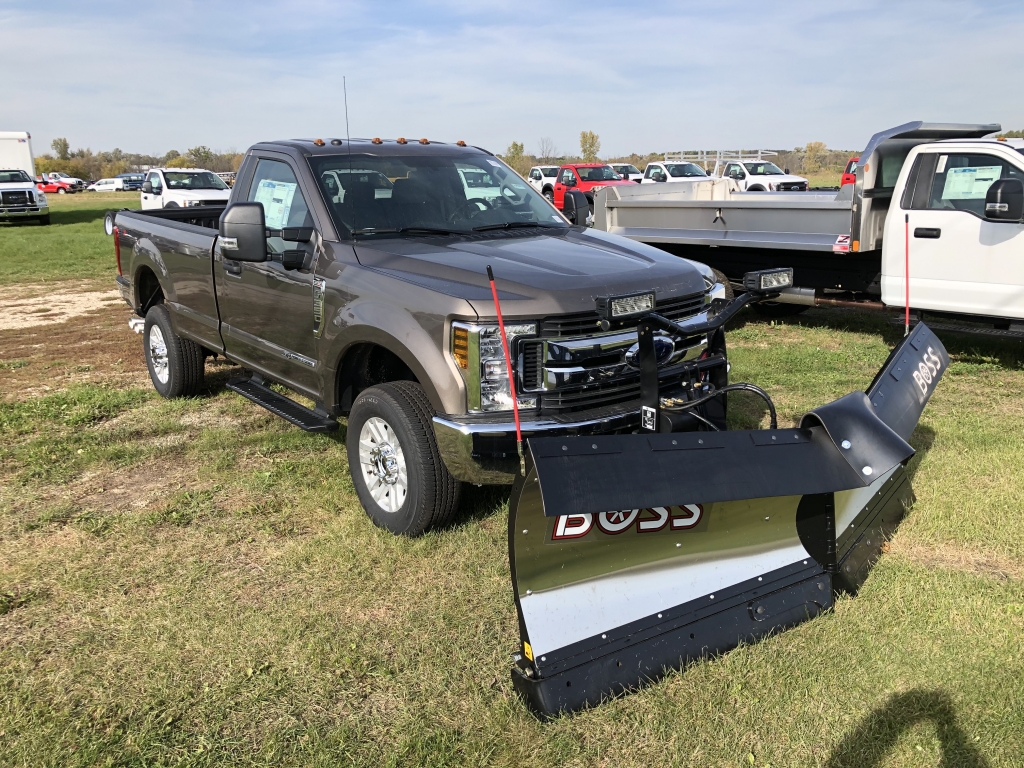
Key truck features for plowing include a strong frame, robust suspension (often upgraded for plowing), a powerful engine (gasoline or diesel, with diesel offering more torque for heavy loads), and a reliable 4×4 or AWD system.
2. The Snow Plow System:
The business end of the plow truck, the snow plow itself, comes in various designs:
- Straight Plows: The most basic and common type, ideal for pushing snow straight ahead or angling it to one side. They are straightforward to operate and maintain.
- V-Plows: Shaped like a "V" when fully angled, these are excellent for breaking through deep snowdrifts and then converting to a straight or scoop position for efficient clearing. They offer superior versatility.
- Box Plows (Pushers): Large, U-shaped plows designed to push massive volumes of snow, especially in large parking lots. They are highly efficient for moving snow but less effective for cutting through deep, hard-packed snow.
- Back Plows: Mounted on the rear of the truck, these allow for pulling snow away from buildings or obstructions, often used in conjunction with a front plow.
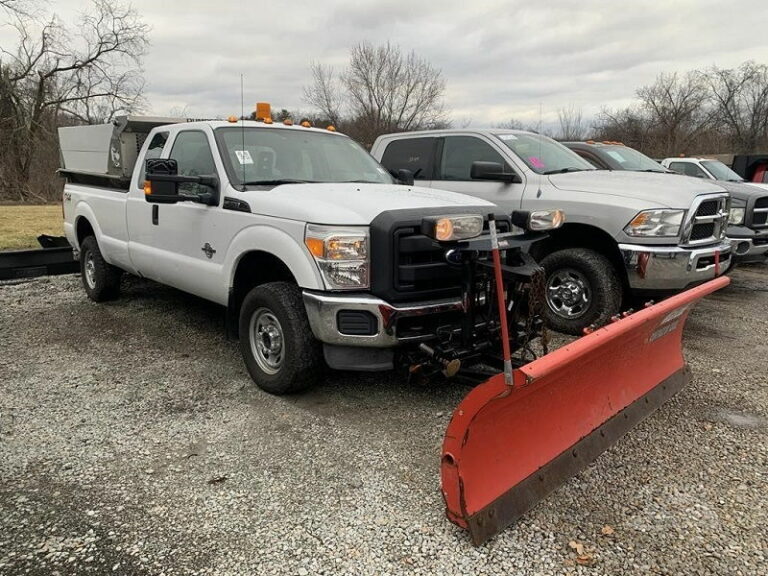
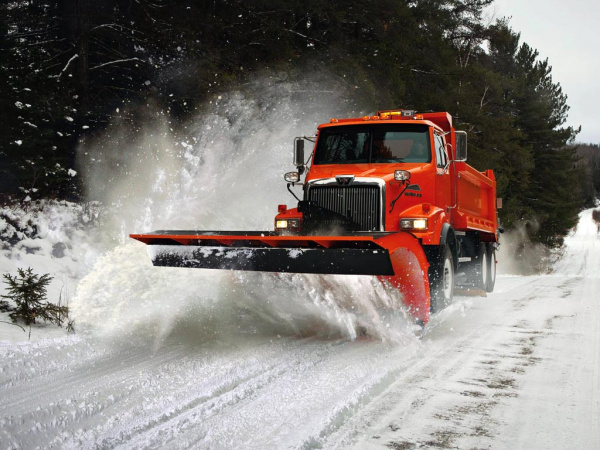
Plows are typically made from steel, poly (polyethylene), or stainless steel. Poly plows are lighter and non-stick, while steel and stainless steel offer superior durability. Components like the cutting edge (replaceable), trip springs (protect against obstacles), and hydraulic cylinders are critical for performance and longevity.
3. The Hydraulic and Electrical Systems:
These systems power and control the plow’s movement (lifting, angling, scooping). A robust hydraulic pump, well-maintained hoses, and a reliable electrical system for lights and controls are essential. Many trucks intended for plowing come with heavy-duty alternators and specialized wiring harnesses.
4. Optional Accessories:
Many plow trucks are also equipped with salt spreaders or sanders mounted in the bed, allowing for de-icing operations after plowing. Additional lighting, strobes, and warning beacons are also common for safety.
Why Invest in a Plow Truck? Benefits & Applications
The decision to purchase a plow truck extends beyond simply needing to clear snow. It’s an investment that offers a multitude of benefits:
- Commercial Opportunities: For entrepreneurs, a plow truck opens the door to lucrative snow removal contracts for commercial properties, residential communities, and even municipalities. Landscaping, construction, and property management companies can diversify their services and generate significant winter revenue.
- Personal Convenience & Safety: For homeowners in snow-prone regions, a personal plow truck eliminates the back-breaking labor of shoveling and ensures immediate access to driveways and properties, enhancing safety during severe weather.
- Property Value & Accessibility: Keeping commercial parking lots and access roads clear ensures business continuity and customer access, preventing lost revenue and potential liabilities from slips and falls.
- Emergency Preparedness: Essential services, medical facilities, and critical infrastructure rely on clear access. Plow trucks are integral to maintaining these vital pathways during snow emergencies.
- Versatility: Many plow trucks, especially pickup models, serve as multi-purpose vehicles outside of winter, making them a year-round asset for hauling, towing, or general transportation.
Navigating the Market: New vs. Used Plow Trucks
The first major decision when looking for "Plow Trucks For Sale" is whether to buy new or used. Each option presents distinct advantages and disadvantages.
New Plow Trucks:
- Pros: Full manufacturer’s warranty, latest technology and features, peak reliability, no hidden wear and tear, customizable options, often include snow prep packages (heavy-duty alternators, upgraded suspension).
- Cons: Significantly higher upfront cost, immediate depreciation upon driving off the lot.
Used Plow Trucks:
- Pros: Substantially lower purchase price, wider selection of makes and models, less depreciation, potentially more robust older models known for durability.
- Cons: Higher risk of hidden mechanical issues, potential for rust and wear, no warranty (or limited), may require immediate repairs or maintenance, unknown service history.
Key Considerations for Used Plow Trucks:
When examining used "Plow Trucks For Sale," pay extremely close attention to the following:
- Rust: Plowing involves constant exposure to salt, sand, and moisture. Inspect the frame (especially near plow mounts), body panels, wheel wells, brake lines, and fuel lines for severe rust. Surface rust is common; deep, flaking, or perforating rust is a major red flag.
- Engine & Transmission: Listen for unusual noises, check fluid levels and color (burnt smell is bad), and inquire about service records. A pre-purchase inspection by a trusted mechanic is non-negotiable.
- 4×4 System: Engage and disengage the 4×4, test in both high and low range. Ensure it shifts smoothly and engages properly.
- Plow Condition: Inspect the plow itself for cracks, bends, hydraulic leaks, excessive wear on the cutting edge, and proper function of all hydraulic cylinders and electrical controls. Check the plow’s mounting system for damage or stress.
- Suspension & Steering: Plowing puts immense stress on these components. Look for sagging, worn bushings, or excessive play in the steering.
- Tires: Ensure adequate tread depth, ideally aggressive all-terrain or dedicated snow tires for maximum traction.
Choosing the Right Plow Truck for Your Needs
Selecting the ideal plow truck requires a clear understanding of your specific requirements.
-
Define Your Purpose:
- Residential: Clearing your own driveway and perhaps a few neighbors. A 1/2-ton or light 3/4-ton truck with a 7.5-foot straight plow might suffice.
- Small Commercial: Handling several residential driveways, small commercial lots. A 3/4-ton or 1-ton truck with an 8-foot straight or V-plow is a good starting point.
- Large Commercial/Municipal: Extensive parking lots, multiple large properties, roadways. You’ll need a 1-ton, medium-duty, or heavy-duty truck with a 9-foot+ V-plow, box plow, or even a highway plow.
-
Assess Snowfall Levels:
- Light/Moderate Snow: A smaller truck and plow combination can handle this.
- Heavy/Frequent Snow: Requires a more robust truck, potentially a V-plow for breaking through drifts, and sufficient horsepower/torque.
-
Consider Property Size and Type:
- Tight spaces and winding driveways benefit from more maneuverable trucks and plows.
- Large, open areas are best tackled by wider plows and more powerful trucks, especially with box plows.
-
Truck Capacity & Plow Compatibility: Never exceed the truck’s Gross Vehicle Weight Rating (GVWR) or Front Axle Weight Rating (FAWR) once the plow is mounted and filled with snow. Manufacturers provide guidelines for which plows are compatible with specific truck models. Overloading can lead to premature wear, reduced braking performance, and dangerous handling.
-
Budget: Factor in not just the purchase price, but also insurance, fuel costs, ongoing maintenance, and potential repairs. Remember that a cheaper initial purchase might lead to higher maintenance costs down the line.
Inspection Checklist: What to Look For Before You Buy
When you find a "Plow Truck For Sale" that catches your eye, a thorough inspection is critical.
- Exterior & Body: Check for significant rust, especially around fenders, rocker panels, and the bed. Look for signs of past accidents or poor repairs.
- Frame & Undercarriage: This is paramount. Inspect the entire frame for cracks, bends, or severe rust that compromises structural integrity. Pay close attention to where the plow mounts attach.
- Engine & Drivetrain:
- Check for fluid leaks (oil, transmission fluid, coolant, hydraulic fluid).
- Listen for unusual engine noises (knocks, rattles, excessive smoke).
- Check oil and transmission fluid levels and color.
- Test the 4×4 system thoroughly in both high and low range.
- Look for signs of abuse or neglect (e.g., mismatched tires, excessive vibrations during a test drive).
- Suspension & Steering: Bounce each corner of the truck to check shocks. Look for worn ball joints, tie rods, or steering linkage. Test for excessive play in the steering wheel.
- Brakes: Check the condition of brake lines (especially for rust), rotors, and pads. Test the brakes during the test drive for pull or softness.
- Electrical System: Test all lights (headlights, tail lights, warning lights), wipers, heater, and particularly the plow controls. Ensure all connections are secure and corrosion-free.
- Plow & Mount:
- Inspect the plow blade for excessive wear, cracks, or bends.
- Check the cutting edge for wear and ensure it’s replaceable.
- Look for hydraulic leaks around cylinders and hoses.
- Test all plow functions (lift, angle, scoop) to ensure smooth operation.
- Inspect the plow mount on the truck for any damage or excessive wear.
- Interior: While less critical for performance, a well-maintained interior often indicates overall care. Check for comfortable seating for long hours, functional climate control, and good visibility.
Actionable Insight: Always get a pre-purchase inspection from an independent, certified mechanic who is familiar with plow trucks. Their expertise can uncover hidden issues that you might miss.
Maintenance & Ownership Tips
Owning a plow truck is a significant investment that requires ongoing care to ensure longevity and reliable performance.
- Pre-Season Check-Up: Before the first snowfall, perform a thorough inspection. Check all fluids (engine oil, transmission, differentials, coolant, brake, hydraulic fluid for the plow), battery, tires, lights, and ensure all plow functions are operating correctly. Lubricate all grease points on the plow and truck.
- Post-Season Storage: After the last snow, clean the truck and plow thoroughly to remove salt and debris. Touch up any paint chips to prevent rust. Grease all moving parts, and store the plow in a dry, covered area, ideally raised off the ground. Disconnect the plow’s electrical system if storing it attached.
- Regular Servicing: Follow the manufacturer’s recommended service intervals for engine oil changes, transmission fluid changes, and differential fluid changes. Plowing puts extra stress on these components.
- Rust Prevention: Regular washing, especially the underside, is crucial to remove salt. Consider applying an undercoating or rust preventative annually.
- Hydraulic System Care: Check hydraulic fluid levels regularly. Inspect hoses for cracks or leaks. Replace worn hoses or fittings promptly.
Potential Challenges & Solutions
Even with careful selection, owning a plow truck can present challenges.
- Challenge: Rapid Rust Progression: Salt and moisture are corrosive.
- Solution: Proactive rust prevention (undercoating, regular washing), immediate touch-up of paint chips, and storing the plow clean and dry.
- Challenge: Hydraulic System Failures: Leaks, slow operation, or complete failure.
- Solution: Regular fluid checks, inspection of hoses and fittings, proper bleeding of the system, and professional repair for complex issues.
- Challenge: Electrical Gremlins: Lights flickering, plow controls malfunctioning.
- Solution: Check all connections for corrosion, inspect fuses, and trace wiring. Professional diagnostics may be needed for persistent issues.
- Challenge: Accelerated Wear on Truck Components: Suspension, steering, and drivetrain components wear faster due to stress.
- Solution: Invest in a truck with a dedicated snow plow prep package, perform regular maintenance, and address any unusual noises or handling issues immediately.
- Challenge: Finding Parts for Older Models:
- Solution: Research common models with good parts availability. Join online forums or local plowing communities for advice on sourcing parts.
Plow Trucks For Sale: Estimated Price Guide
Please note that these prices are estimates and can vary significantly based on location, condition, mileage, specific features, brand, and market demand. New truck prices do not include plow installation unless specified as a package.
| Category | Truck Type Examples | Truck Only (Estimated Price Range) | Plow Only (Estimated Price Range) | Combined (Estimated Price Range) | Key Factors Affecting Price |
|---|---|---|---|---|---|
| New Light-Duty | Ford F-150, Ram 1500, Chevy Silverado 1500 | $45,000 – $75,000+ | $5,000 – $8,000 | $50,000 – $83,000+ | Trim level, engine, options, snow prep package |
| Used Light-Duty | Ford F-150, Ram 1500, Chevy Silverado 1500 (3-7 years old) | $20,000 – $40,000 | $2,000 – $5,000 | $22,000 – $45,000 | Age, mileage, condition, rust, maintenance history |
| New Medium-Duty | Ford F-250/350, Ram 2500/3500, Silverado 2500/3500 HD | $60,000 – $95,000+ | $7,000 – $15,000 | $67,000 – $110,000+ | Diesel vs. gas, trim level, 4×4, plow prep package |
| Used Medium-Duty | F-250/350, Ram 2500/3500, Silverado 2500/3500 HD (3-10 yrs) | $25,000 – $55,000 | $3,000 – $8,000 | $28,000 – $63,000 | Age, mileage, engine type, transmission, 4×4, rust, plow condition |
| New Heavy-Duty/Commercial | Ford F-450/550, Ram 4500/5500, International, Freightliner | $75,000 – $150,000+ | $10,000 – $30,000+ | $85,000 – $180,000+ | Chassis cab vs. pickup, engine, specialized equipment (spreaders), custom upfits |
| Used Heavy-Duty/Commercial | F-450/550, Ram 4500/5500, International (5-15 years old) | $30,000 – $70,000 | $5,000 – $15,000 | $35,000 – $85,000 | Commercial use history, engine hours, maintenance records, specialized equipment included |
| Specialized/Municipal | Purpose-built municipal trucks, large capacity | $100,000 – $300,000+ | $20,000 – $50,000+ | $120,000 – $350,000+ | Custom build, specific features, large spreaders, highway plows, advanced hydraulics |
Frequently Asked Questions (FAQ) About Plow Trucks For Sale
Q1: What’s the best truck for plowing?
A1: There’s no single "best" truck. It depends on your specific needs. For residential, a 3/4-ton pickup is often ideal. For serious commercial work, a 1-ton or medium-duty truck (like an F-450/550) provides the necessary durability and capacity.
Q2: How much does a plow truck cost?
A2: As shown in the table above, prices vary widely. A used light-duty setup might start around $22,000, while a new, fully equipped heavy-duty commercial unit can exceed $100,000.
Q3: Should I buy a new or used plow truck?
A3: If budget allows and you prioritize reliability and warranty, new is best. If cost is a primary concern, used can offer great value, but requires more careful inspection for wear, rust, and mechanical issues.
Q4: What kind of maintenance does a plow truck need?
A4: Regular maintenance includes pre- and post-season checks, fluid changes (engine, transmission, differentials, hydraulics), rust prevention (washing, undercoating), and inspection of all plow components.
Q5: Can I put a plow on any truck?
A5: No. Trucks need to be properly rated for the weight of the plow and snow, considering their Gross Vehicle Weight Rating (GVWR) and Front Axle Weight Rating (FAWR). The frame, suspension, and engine must be robust enough. Many truck manufacturers offer "snow plow prep packages" for this reason.
Q6: What’s the difference between a straight plow and a V-plow?
A6: A straight plow pushes snow forward or angles it to one side. A V-plow can break through deep drifts by cutting a path, then transform into a straight or scoop position, offering more versatility, especially in heavy snow.
Q7: Do I need a Commercial Driver’s License (CDL) to operate a plow truck?
A7: Generally, no, unless the Gross Vehicle Weight Rating (GVWR) of the truck itself (not including the plow) is over 26,001 pounds, or if you’re operating a combination of vehicles with a combined GVWR over 26,001 pounds and the towed unit is over 10,000 pounds. Most residential and many commercial pickups do not require a CDL.
Q8: What is GVWR and why is it important for plowing?
A8: GVWR (Gross Vehicle Weight Rating) is the maximum permissible total weight of a vehicle, including its own weight, passengers, cargo, and any added equipment like a plow. It’s crucial because exceeding the GVWR (especially the Front Axle Weight Rating) can compromise handling, braking, and accelerate wear on the truck’s components, making it unsafe and potentially illegal.
Conclusion
The market for "Plow Trucks For Sale" is diverse, offering solutions for every scale of snow removal. Whether you’re a homeowner seeking peace of mind, a small business aiming to expand services, or a large-scale commercial operator, a well-chosen plow truck is an indispensable tool.
The key to a successful purchase lies in meticulous research, understanding your specific needs, and conducting a thorough inspection of any potential vehicle, especially used models. By prioritizing factors like truck capacity, plow compatibility, rust prevention, and maintenance history, you can secure a reliable asset that will effectively clear the path for many winters to come. A plow truck isn’t just a purchase; it’s an investment in safety, efficiency, and the ability to conquer winter’s challenges head-on.
